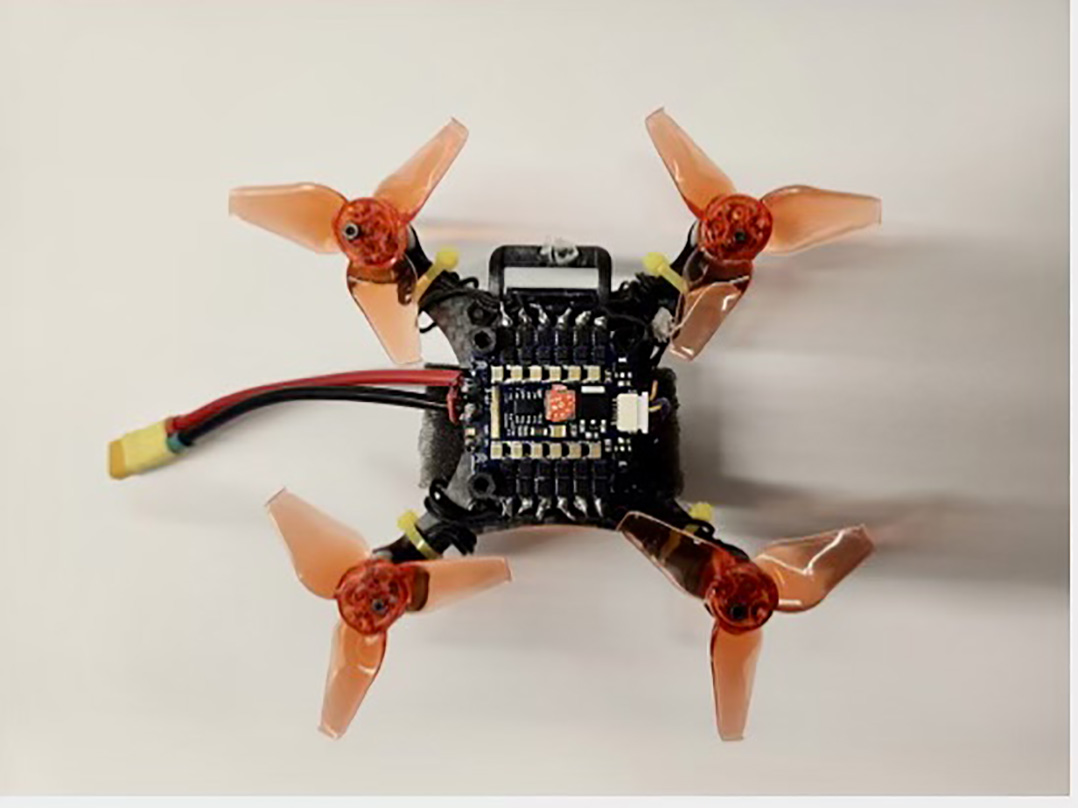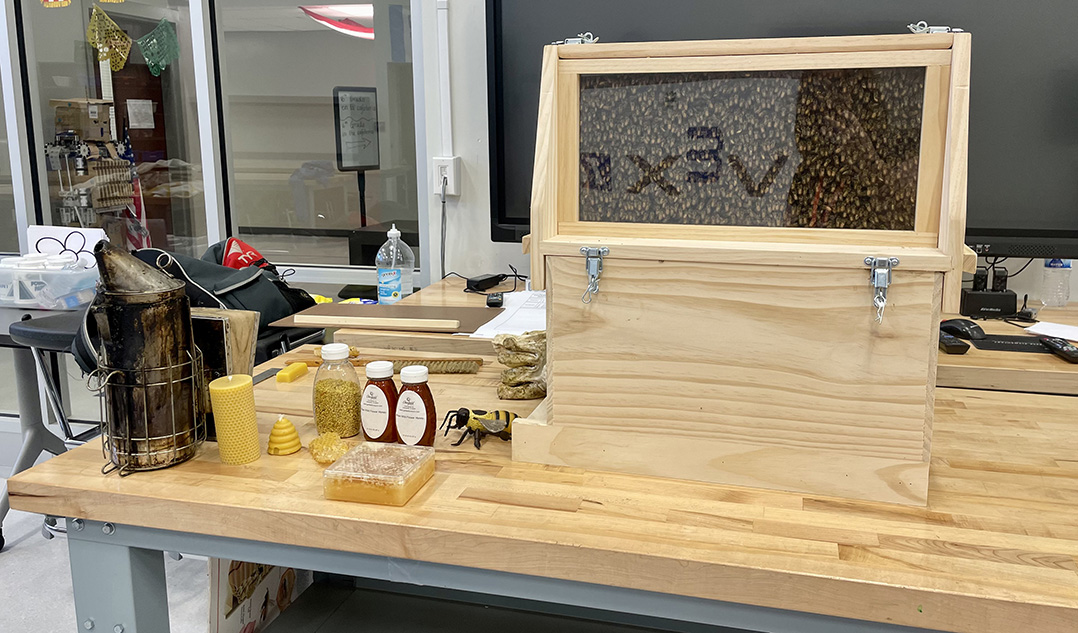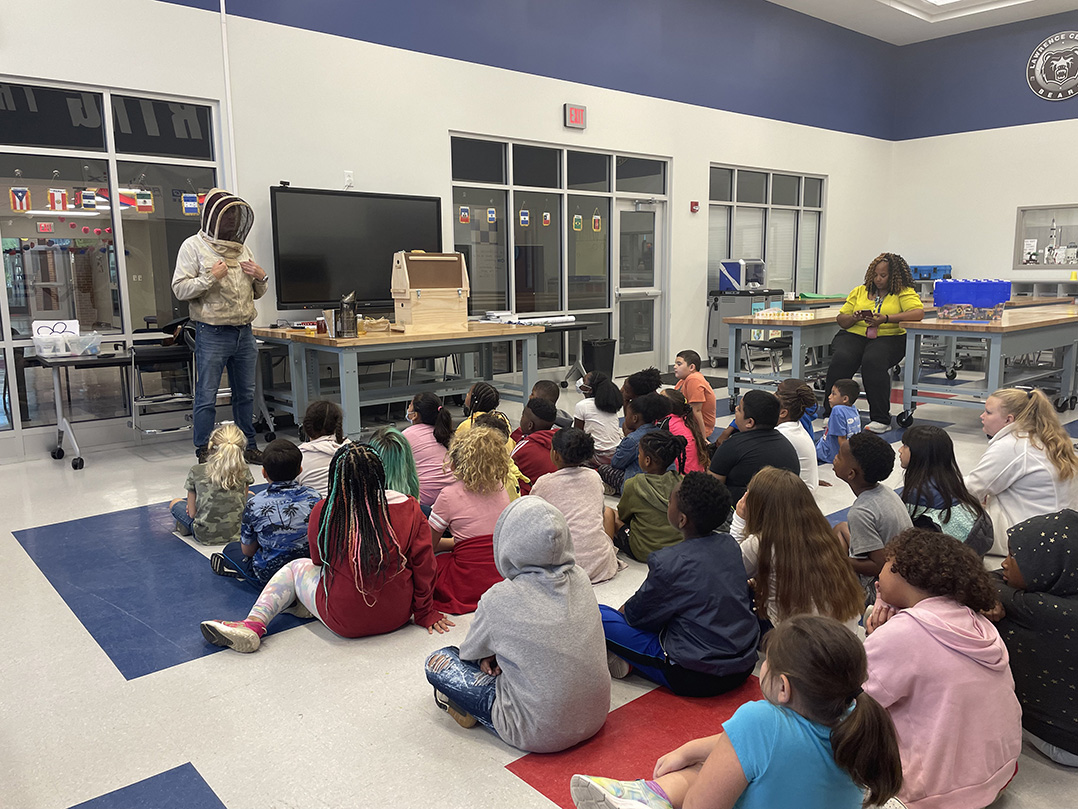LaMonica Henson’s Indian Creek Elementary third-grade class recently started its learning unit on bees. The unit isn’t a standard lesson on bees, though. Henson’s class spoke with experts in the field about real and robotic bees.
The theme for third grade at Indian Creek Elementary is apples, so all the classes are learning about things related to the fruit.
“We always learn about apples in third grade. We have for years and years done the apple unit and gone to the apple orchard,” Henson said. “But we never talked about it from the angle of, ‘You can’t have apples without bees.’”
Henson also wanted to ensure her students learned the importance of bees, how they can help the environment and what people can do to help save the bees. That is why Henson also applied for — and received — a grant from Whole Foods for $1,500 to purchase materials for installation of a beehive and $500 to get the hive started.
“I think people should be aware that bees are on the decline and it’s because of our use of herbicides and pesticides and trying to make our yards perfect. But there’s nothing wrong with having native plants,” Henson said. “That’s what I’m hoping to impress on my students. I’m hoping that they see we need to take care of the earth. We need to allow native plants (to flourish) and we need to use natural organic pesticides rather than chemicals.”
On Sept. 20, local beekeeper Brian Mahern came to school and talked to two third-grade classes about his work with bees. He showed students the tools he uses, including a smoker, which produces cool smoke to calm the bees, and his bee suit, complete with a mesh hood to keep the bees from stinging his face and body.
Mahern said bees can help identify larger environmental problems.
“I think bees can tell us a lot about life,” Mahern said. “They can give us a good sense of what’s going on currently on the planet and have a complexity that somewhat mirrors humans. Bees are sensitive to environmental conditions, so when the bees are affected, that gives us some kind of idea on how the environment might be affected.”
Henson said bee populations are declining. Nearly 30 to 40 percent of honeybee colonies are dissipating annually, according to etymologists.
Yiannis Aloimonos, a professor of computer science at University of Maryland Institute for Advanced Computer Studies, and graduate student Chahat Deep Singh are working to develop technology to help bees pollinate.

Aloimonos and Singh connected with the MSDLT third-graders through John Somers, an associate professor at the University of Indianapolis. Somers said last year he and his team at UIndy worked with MSDLT and Indian Creek to help develop the district’s STEM program, so when Henson reached out to him about teaching her student about advancements in nature technology, Somers dove into research about drone bees – or male honeybees — and helped connect Henson’s class Aloimonos and Singh.
Aloimonos, Singh, Sommers and Sommers’ intro to engineering class and Henson and her third-graders all participated in a Zoom call Sept.28 to discuss the technology and artificial intelligence drones that might soon help the honeybee population.
Henson’s third-grade class will conclude their unit on bees by making their own informed decision on whether or not robots may be the future of pollination.
“(Aloimonos) was saying that the young people are the hope for the world, and I couldn’t agree with him more,” Somers said. “With the young folks it seems that they have a passion to really address the serious challenges to our earth and the bee population.”

The importance of STEM
Last year, seven out of the 11 MSDLT schools were recognized as STEM Certified by the Indiana Dept. of Education because of their emphasis on teaching science, technology, engineering and math.
In addition, makerspaces have been added to all 11 elementary schools. A makerspaceis an area with tools and other items that allows students to build and create things to encourage STEM learning.
Teaching STEM at a young age is important, said John Somers, an associate professor at the University of Indianapolis.
“The other day, we were doing basic circuits in my intro to engineering class and my college students had never hooked up a circuit to make a light bulb light,” Sommers said. “So, as the world is becoming much more technologically advanced at a rapid pace, we really need our teachers to understand the importance of STEM, and particularly the importance of engineering.”





